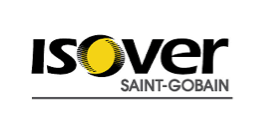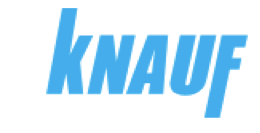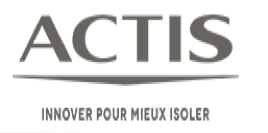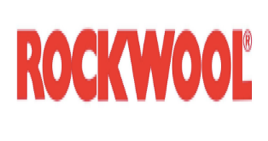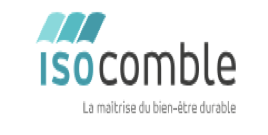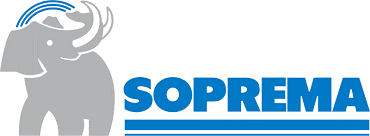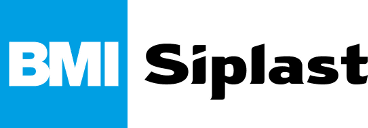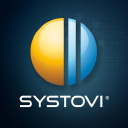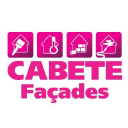Detailed content of our market study
 Inforamtion
Inforamtion
- Number of pages : ~ 40 pages
- Format : Digital and PDF versions
- Last update :
 Summary and extracts
Summary and extracts
1 Market overview
1.1 Definition and scope of study
Insulation is a set of techniques with a dual purpose:
- Acousticallyprotect the interior of the home from outside influences;
- Toconserve heat and improve the interior's thermal energy balance;
The market can be divided into two markets: insulation materials and insulation work.
The market is structured between suppliers of raw materials, manufacturers of insulating materials, specifiers, distributors and, finally, installers who work with end customers. The market is driven by new housing starts, but also by renovation. It's a dynamic market worldwide, with an average annual growth rate of 6. 5% between 2022 and 2030.
In France, the insulation market is at the heart of current concerns, as it is a pillar of the energy transition. Every year, the building sector emits over 123 million tonnes of CO2. It is therefore one of the major challenges of the coming years. In 2023, nearly 5 million homes will still be in a situation of fuel poverty.
In 2021, 45 million cubic meters of insulation were installed, a figure up on 2019 and set to continue growing in the years to come.
In recent years, government policy has offered consumers a wide range of financial incentives, including tax deductions and zero-rate eco-loans (see Regulations section). The building insulation market has been boosted by these government efforts, and in particular by the use of bio-sourced materials in a dual response to environmental challenges.
Players in this market include manufacturers of insulating materials, such as market leaders Knauf and Rockwool, as well as installers who carry out innovative insulation work in buildings and homes, such as Isocomble and Isorenov.
1.2 A growing global market
Market size
According to Grand View Research, the global insulation market is estimated at ** billion in ****, and is forecast to grow at an annual rate of *.*% between **** and ****. Lhe insulation market is expected to grow steadily to reach $*** billion by ****.
Insulation market sales World, ****-**** Source: ****
This growth is notably driving ...
1.3 A growing national market overall
Growing national market
The thermal insulation market appears to be growing, increasing by **% from **** to ****. However, the market declined in ****, marked by the Covid-** crisis and the first confinements. In ****, professionals witnessed a significant rebound, driven by initiatives such as MaPrimeRénov', which helps finance renovation work for homes built more ...
2 Demand analysis
2.1 Household demand for renovation
A government challenge
The building sector is the second largest emitter of greenhouse gases in France after industry, accounting for **% of CO* emissions. By ****, nearly * million of France's ** million homes will still be poorly insulated , and *.* million households will be struggling to pay their heating bills.
Renovating buildings to make them ...
2.2 The tertiary building stock: an opportunity for the sector
The tertiary sector accounts for a quarter of France's real estate assets and a third of all buildings' energy consumption. like the residential sector, it is relatively old, and in particular requires renovation to reduce energy bills. It is therefore the target of a renovation plan by the French Ministry of ...
2.3 Falling housing starts threaten demand
Insulation installation takes place * months after building starts, so it's possible to anticipate demand for insulation by observing the evolution of building starts. [***]
Insee gives an idea of trends by looking at changes in the number of housing starts since ****. For both single-family and multi-family housing, the number of starts has ...
2.4 Demand dependent on government targets
Buildings account for **% of Frenchenergy consumption , and the sector emits over *** million tonnes of CO* every year, representing almost **% of national emissions. [***] Consequently, the public authorities have made insulation a priority in their policy to reduce energy consumption.
The objectives are ambitious:
****: a **% reduction in the energy consumption of the ...
2.5 Growth in demand for biobased insulation materials
There are many types of bio-sourced insulation: hemp wool is the flagship material for eco-construction, while wood, cotton and flax wool, as well as cellulose wadding, are also known for their performance combined with their natural origin. Although biobased insulation products have a much smaller market share than the competing families ...
2.6 Demand driven by inflation and climate change
Faced with soaring energy prices and the easing of the tariff shield, many homeowners may be inclined to opt for an energy-efficient renovation of their home, as the following graph shows:
"Would you say that rising electricity tariffs could encourage you to undertake energy renovation work on your home?" France, ...
3 Market structure
3.1 The insulating materials for construction/renovation sector
The building insulation sector brings together a large number of players. These players segment the market as follows:
The manufacturing market is dominated by the major international companies such as Saint-Gobain and Knauf. These market giants naturally offer all segments of insulation materials for the construction industry.
alongside these giants, franchises ...
3.2 Insulation by type of building, insulation item and material
Even distribution between new-build and renovation projects
The market is balanced, and this balance varies little from year to year. The Actu environnement website revealed in **** that new construction accounted for **.*% of insulation surfaces installed, compared with **.*% for building renovation. In ****, TBC Innovation updated this figure, with Batiweb reporting an increase ...
3.3 Market sizes
Insee lists total indicators for companies registered under Naf code **.**A (***). The key data are reported in the table below.
Source: ****
3.4 Distribution and number of players in the region
The insulation sector appears to be growing, both in terms of the number of establishments and the number of employees. Both the number of establishments and the number of employees have been rising steadily since ****. In ****, there were *,*** establishments with **,*** employees, and in ****, there will be almost *,*** establishments with **,*** employees, representing ...
4 Offer analysis
4.1 Types of insulation
Insulation materials are made up of different materials, each with different insulation qualities. Insulating materials used in construction form a large family of diversified products. These products can be classified into * main groups:
Mineral wool insulation : glass wool, rock wool and cellular glass; Vacuum insulation : this is a new generation of ...
4.2 Different insulation techniques
There are several options for carrying out insulation work:
Source: ****
4.3 The average price of an installation
The price of interior insulation averages €** per square meter , according to Prix Pose. The site has identified average prices by insulation item and performance level. These are detailed in the chart below.
Average costs of insulation items by performance France, ****, in € per home Source: ****
The site also lists prices according to ...
4.4 The new connected heating market
The aim of connected heating is to simplify the use of heating appliances. From your smartphone, you can now set the temperature of your home, as well as switch heating systems on and off. There are also options for setting air and water temperatures, and for activating the anti-freeze system.
Rothelec, ...
5 Regulations
5.1 Insulation regulations for new buildings
Thedecree of March **, **** , amending the decree of May *, ****, sets new energy performance thresholds to be met for each element of a construction: each region now has its own level of thermal resistance, so the insulation standard is specific to each.
The table below shows the minimum thermal resistance of insulation systems, ...
5.2 Strong government incentives for the residential sector
The regulatory environment is constantly changing, but remains highly favorable to the residential sector. The French Ministry of Ecological and Solidarity Transition has launched the "Coup de pouce économies d'énergies"This scheme enables households to benefit from a *,*** or *,*** euro bonus designed to reduce their carbon footprint. It is available ...
5.3 BBC standards, products and labels, thermal and environmental regulations
Standards and the BBC label
There are a number of standards that help consumers to ensure that products meet their expectations, such as CE marking, andthe French NF mark, which guarantees the safety of materials. Other non-governmental certifications also exist to guide consumers in their choice. The CSTBat certification issued by ...
6 Positioning the players
6.1 Segmentation
- Isover Saint-Gobain
- Knauf
- Actis Isolation
- Rockwool
- Etex France Siniat
- Isoweck (Isocomble)
- Soprema Groupe
- Xella Group
- Siplast
- CETIH
- Dow Chemical
- CABETE Facades
- STO Group
- Saint-Gobain Distribution Bâtiment
- Saint-Gobain Groupe
- Acorus Groupe
- Émaillerie Alsacienne Façade
- Verlaine Groupe
- Buitex (Semin groupe)
- Semin
- Vitage Isolant Technique VIT
- Eurocomble Groupe ONPR
- Aramis
- Myral
 List of charts presented in this market study
List of charts presented in this market study
- Insulation market sales
- Size of the insulation materials market
- Insulation materials market share by geographic region
- Trends in the thermal insulation market for buildings
- Mineral wool exports and imports in France
All our studies are available online in PDF format
Take a look at an example of our research on another market!
Latest news
Companies quoted in this study
This study contains a complete overview of the companies in the market, with the latest figures and news for each company. :
 Choosing this study means :
Choosing this study means :
Access to more than 35 hours of work
Our studies are the result of over 35 hours of research and analysis. Using our studies allows you to devote more time and added value to your projects.
Benefit from 6 years' experience and over 1,500 industry reports already produced
Our expertise enables us to produce comprehensive studies in all sectors, including niche and emerging markets.
Our know-how and methodology enable us to produce reports that offer unique value for money.
Access to several thousand articles and paid-for data
Businesscoot has access to all the paid economic press as well as exclusive databases to carry out its market research (over 30,000 articles and private sources).
To enhance our research, our analysts also use web indicators (semrush, trends, etc.) to identify market trends and company strategies. (Consult our paying sources)
Guaranteed support after your purchase
A team dedicated to after-sales service, to guarantee you a high level of satisfaction. +44 238 097 0676
A digital format designed for our users
Not only do you have access to a PDF, but also to a digital version designed for our customers. This version gives you access to sources, data in Excel format and graphics. The content of the study can therefore be easily retrieved and adapted for your specific needs.
 Our offers :
Our offers :
the building insulation market | France
- What are the figures on the size and growth of the market?
- What is driving the growth of the market and its evolution?
- What is the positioning of companies in the value chain?
- Data from several dozen databases
Pack 5 études (-15%) France
- 5 études au prix de 75,6€HT par étude à choisir parmi nos 800 titres sur le catalogue France pendant 12 mois
- Conservez -15% sur les études supplémentaires achetées
- Choisissez le remboursement des crédits non consommés au terme des 12 mois (durée du pack)
Consultez les conditions du pack et de remboursement des crédits non consommés.



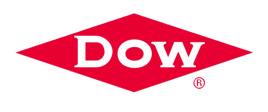 Dow France wants to combine waterproofing and recycling - 29/04/2024
Dow France wants to combine waterproofing and recycling - 29/04/2024
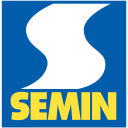 Caroline Semin recycles PET bottles in the building industry - 03/03/2024
Caroline Semin recycles PET bottles in the building industry - 03/03/2024
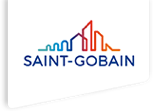 Saint-Gobain ready to set up in Australia for 2.5 billion euros - 22/02/2024
Saint-Gobain ready to set up in Australia for 2.5 billion euros - 22/02/2024
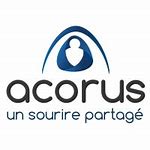 Time off, lost wages, productivity: four-day week at Acorus - 26/12/2023
Time off, lost wages, productivity: four-day week at Acorus - 26/12/2023
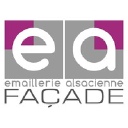 Emaillerie Alsacienne reduces the carbon footprint of façade panels - 17/11/2023
Emaillerie Alsacienne reduces the carbon footprint of façade panels - 17/11/2023
